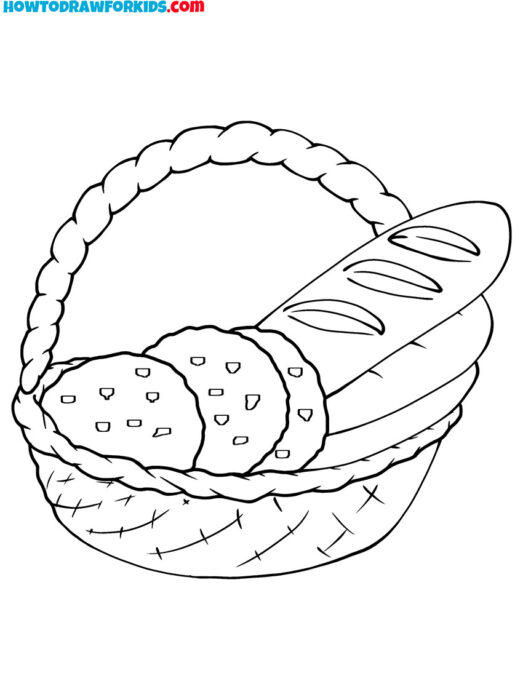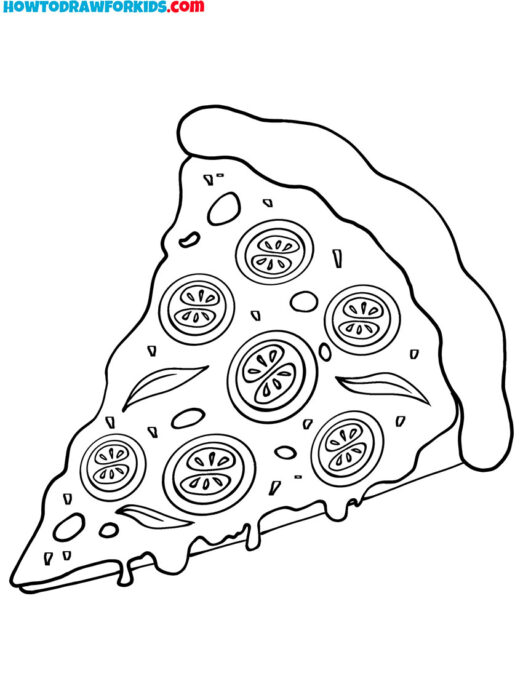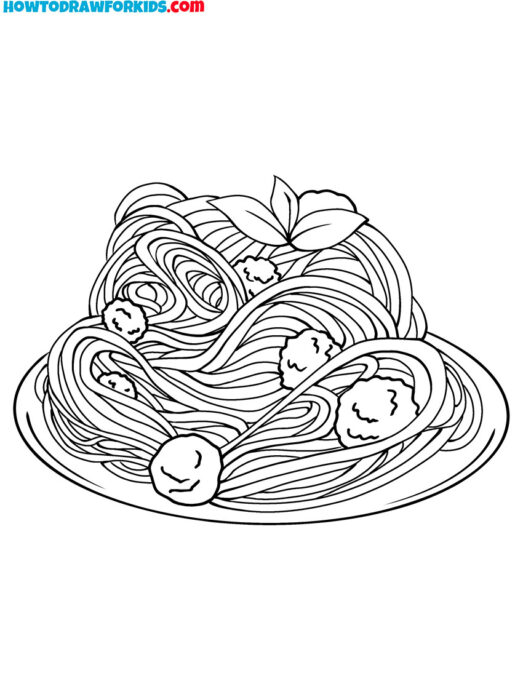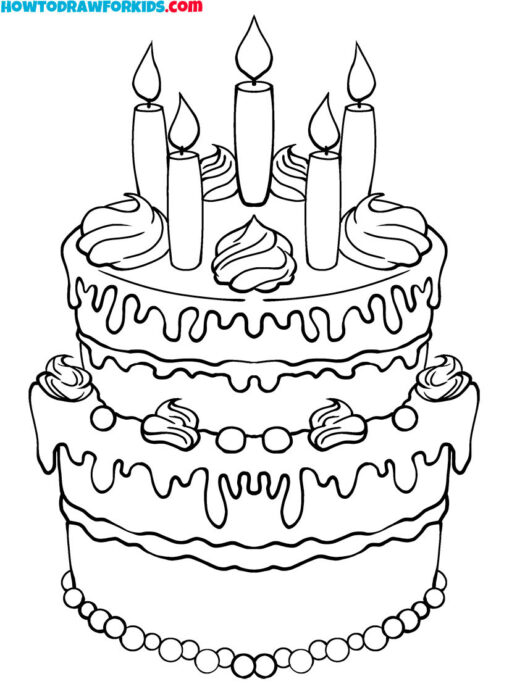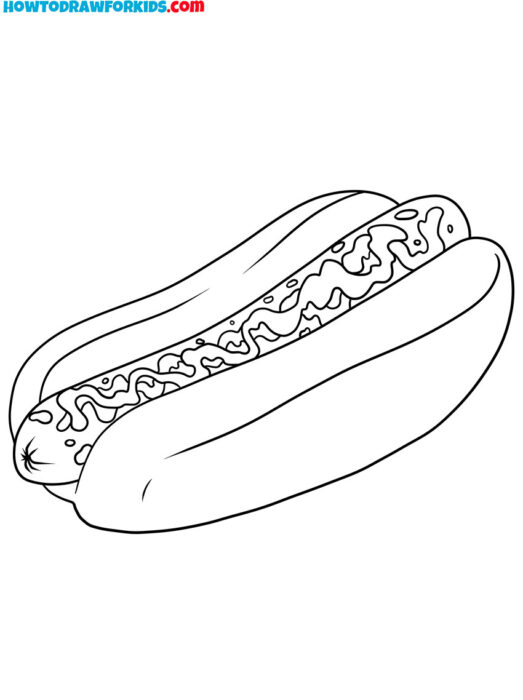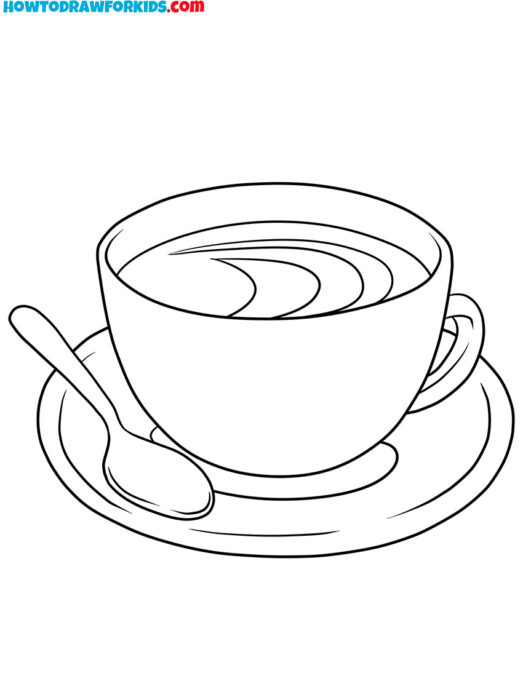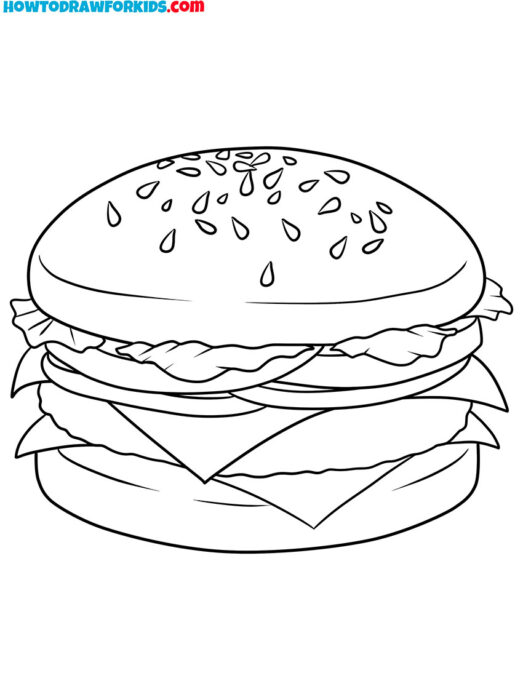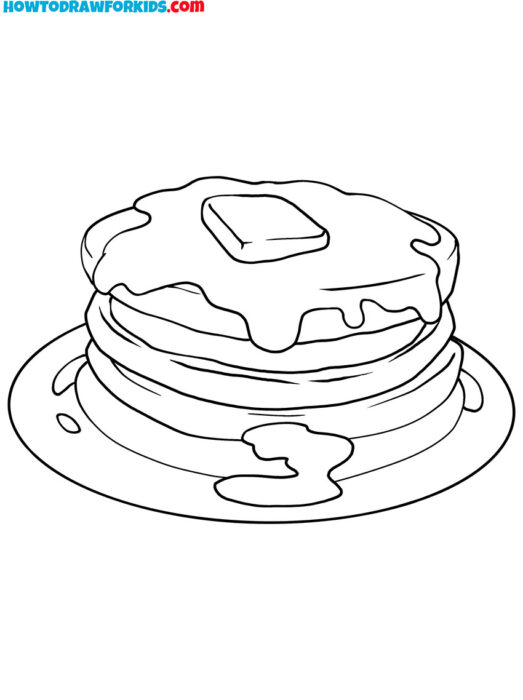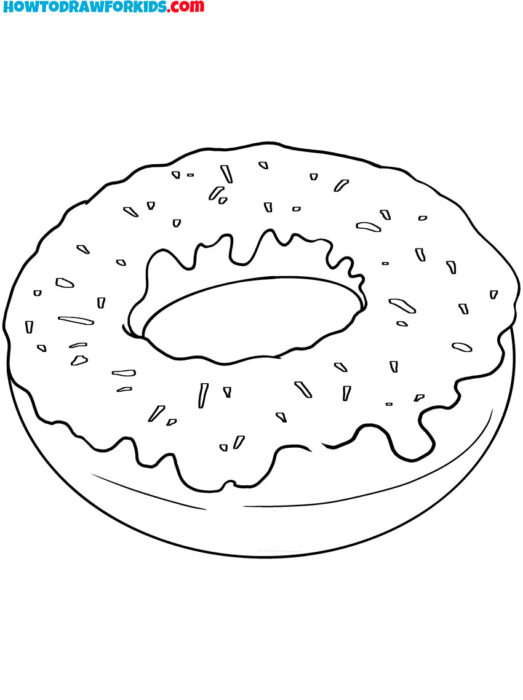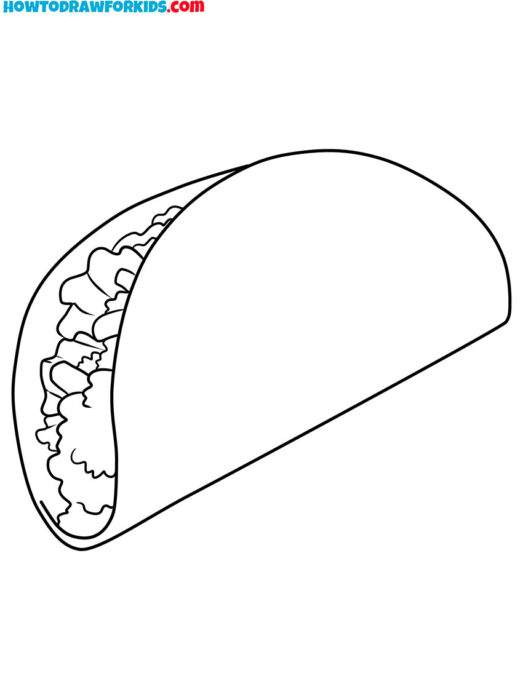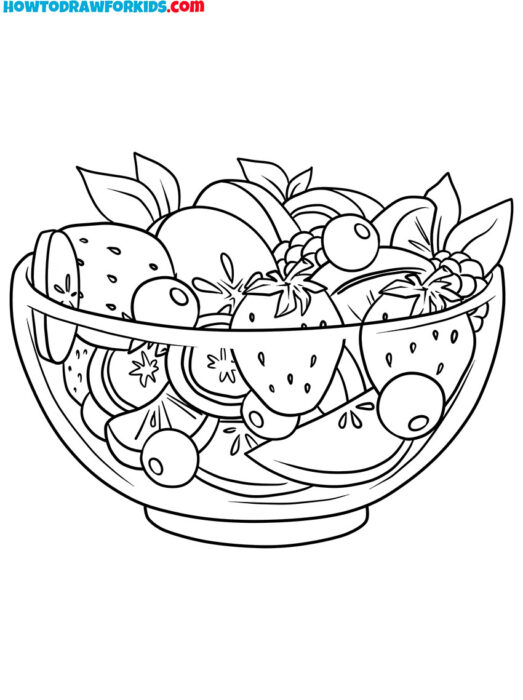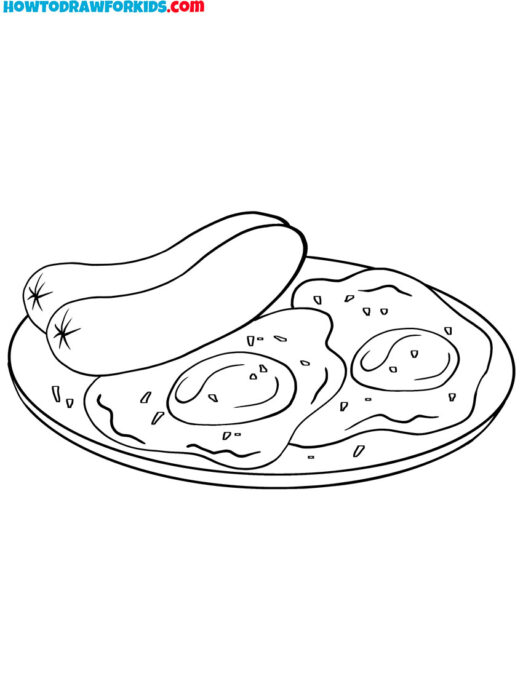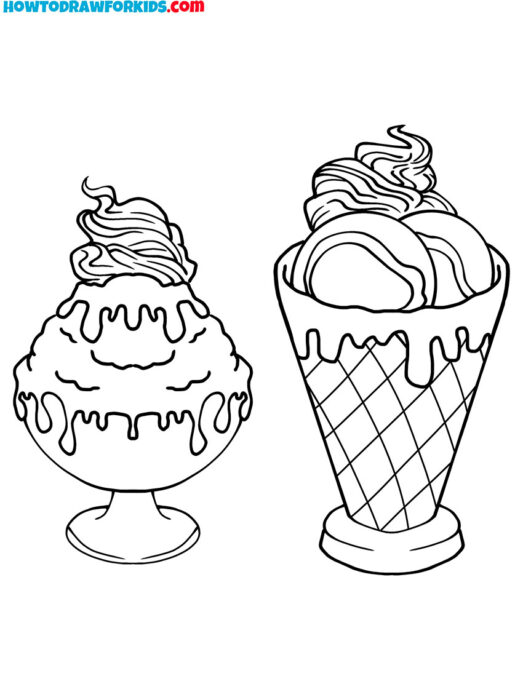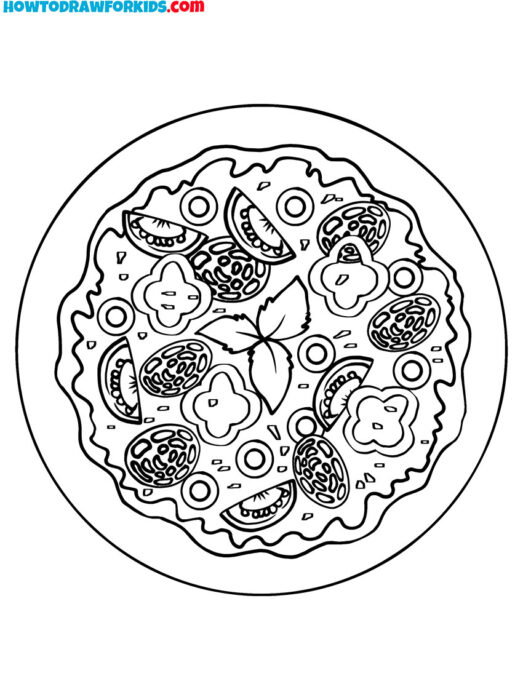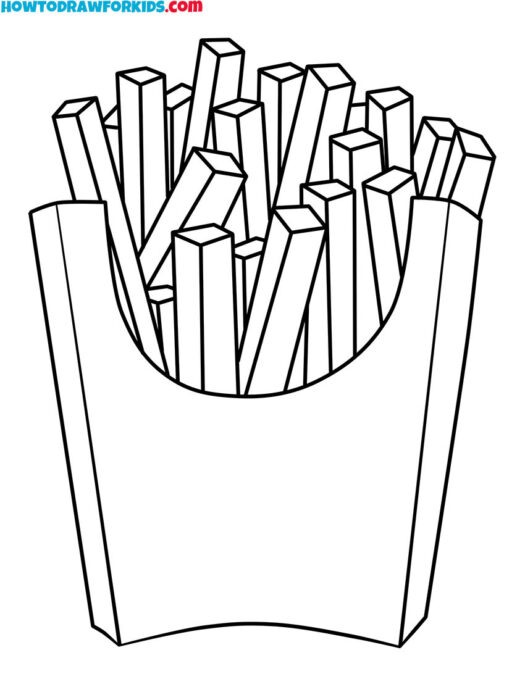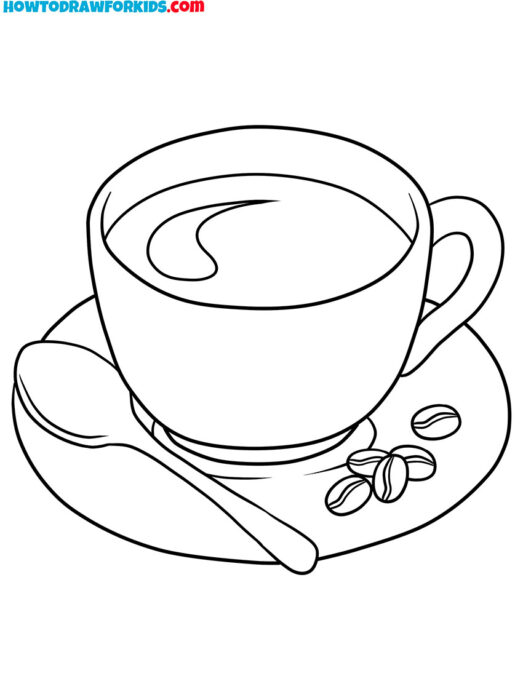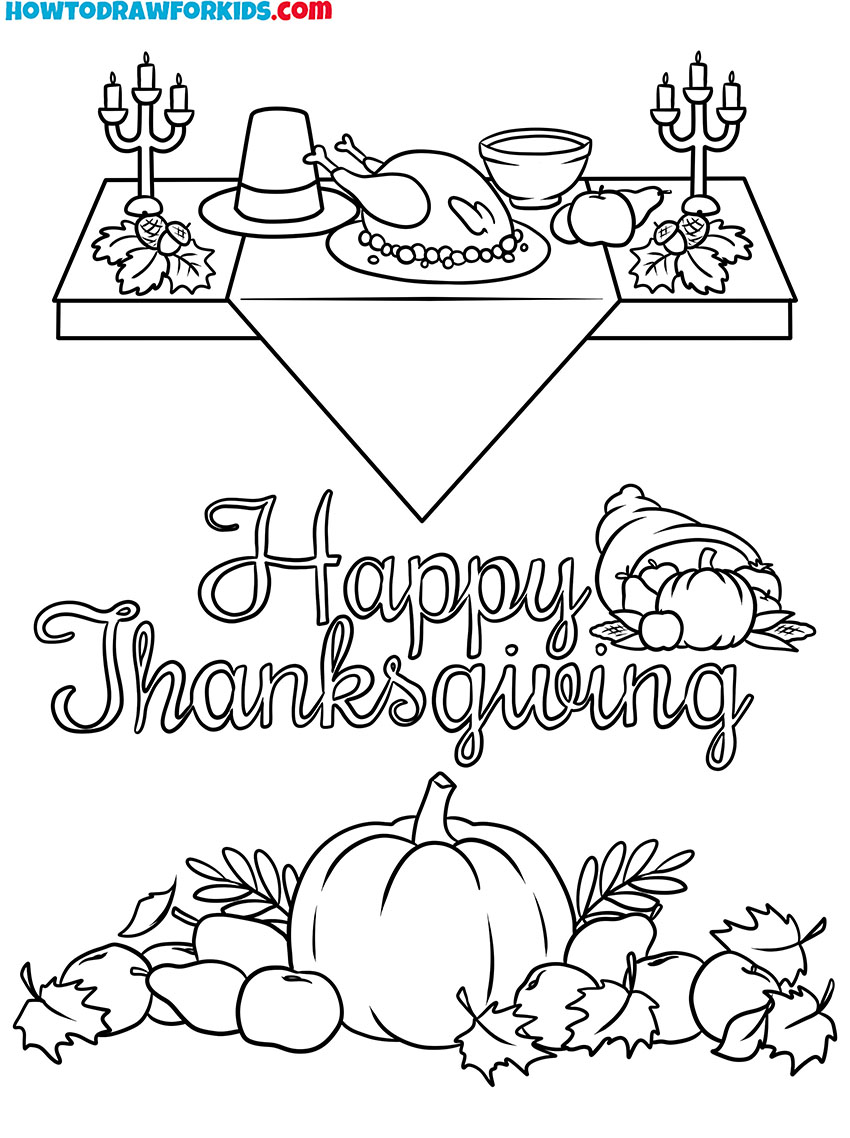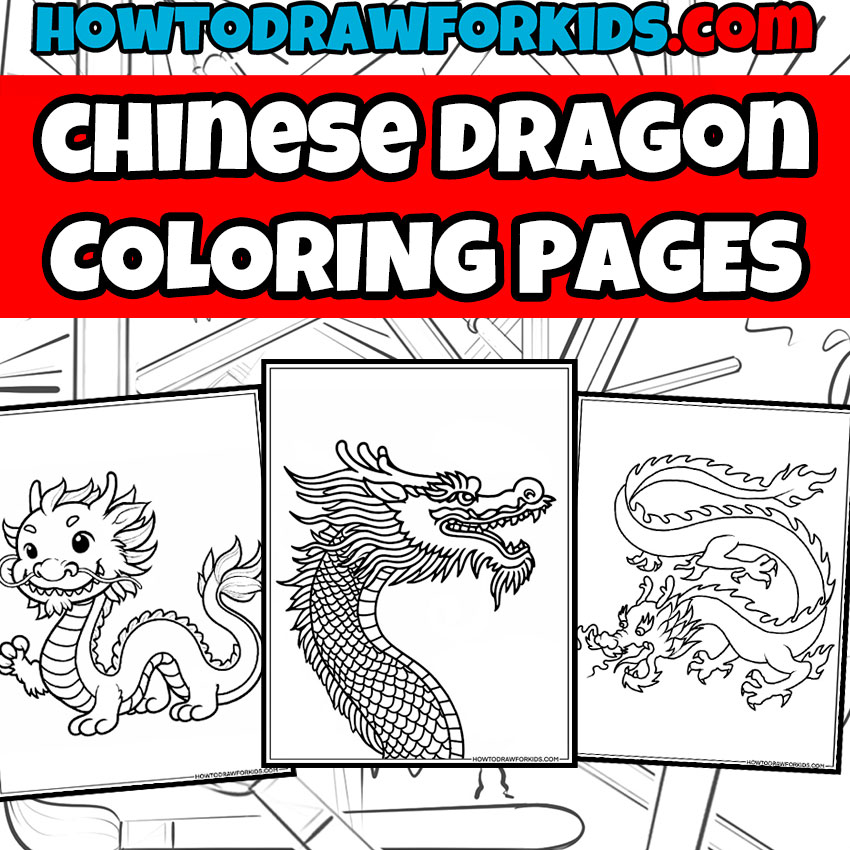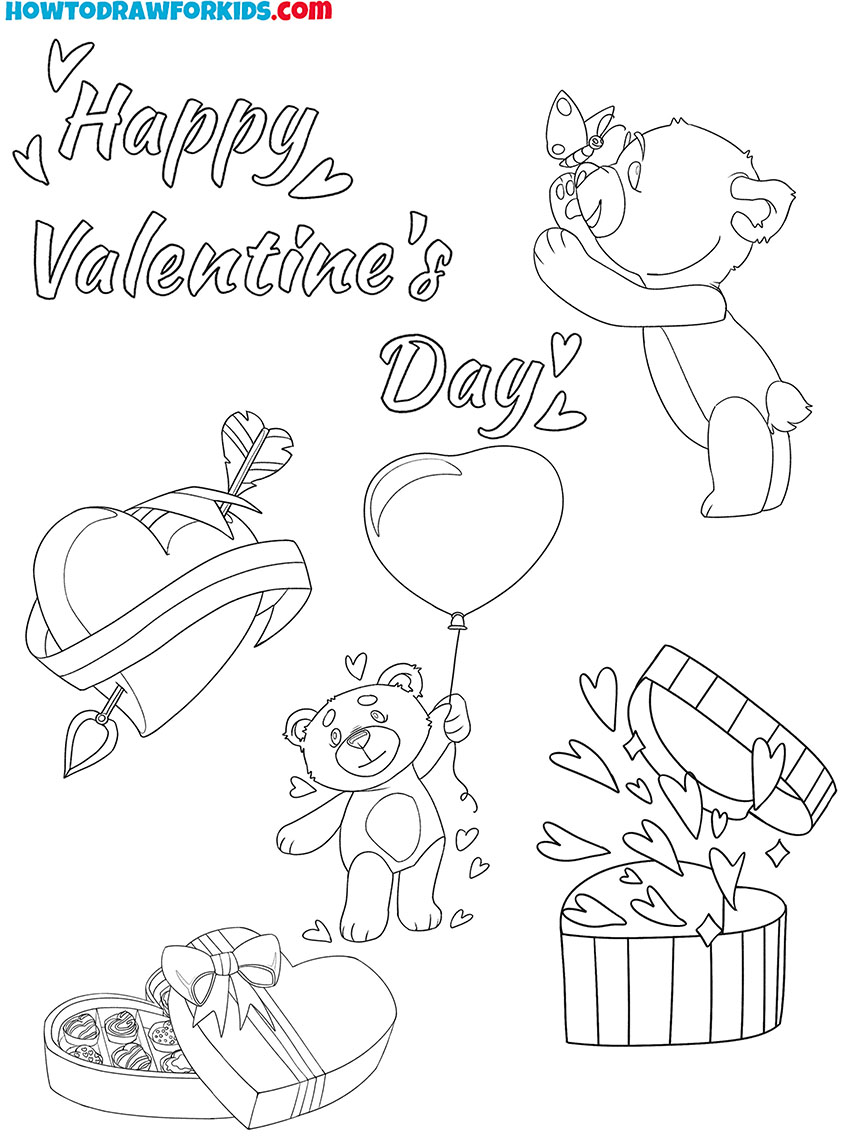Food Coloring Pages
Here’s my collection of food coloring pages with outlines of various dishes and drinks, ready for you to fill with different colors.
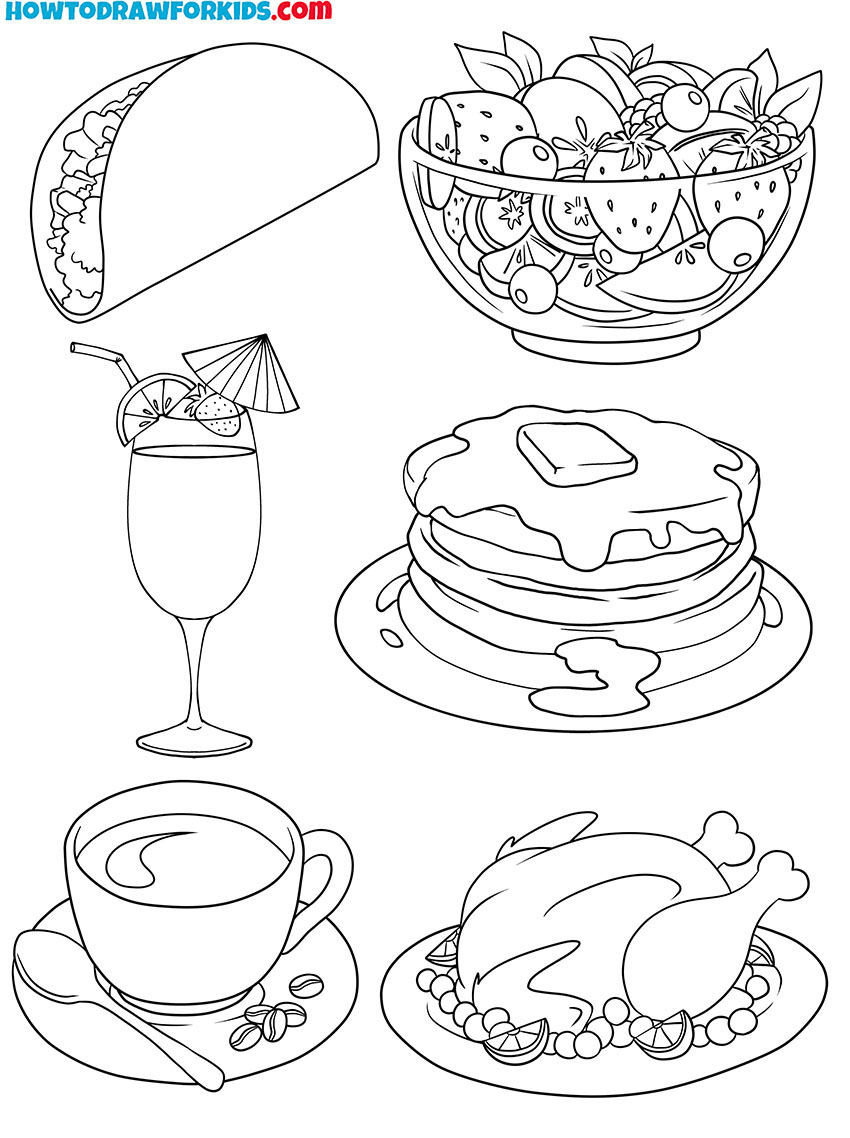
Food Coloring Pages: Introduction
When working with these food coloring pages, there are several things to consider. For instance, when coloring a pizza, think about the color variations between the crust, cheese, and toppings. You might want to use different shades of brown and yellow to highlight the cheese, as well as reds, greens, or other colors for the vegetables or meats.
Coloring fruits also requires attention to shading and details. For example, apples have different tones and shadows that add realism to the image, so using light and dark reds can help improve the final result.
Drinks, such as smoothies or milkshakes, may have a blend of colors due to the mixed ingredients. You can focus on creating smooth transitions between the shades to give the drink a more realistic appearance. When coloring beverages in glass cups, be mindful of the reflection on the glass and the transparency of the liquid.
It’s important to pay attention to the textures and small details on the food coloring sheets. This will help create a more realistic and interesting result. For example, shading techniques can be used to highlight the rough surface of bread or the smooth skin of fruits. Careful use of color transitions will make items such as ice cream or tacos appear more natural.
Food Coloring Pages
Color Schemes for Food Coloring Pages
When working on food coloring pages, focus on how the actual food looks in terms of color, texture, and shading to make it appear more realistic.
For example, when coloring a turkey, begin with a base color of light brown, layering darker browns in areas like under the wings and around the legs to create a roasted look.
For beverages, such as tea, smooth coloring is important to create a polished look. Color the cup using a single base color, adding a darker tone on one side for shadows and a lighter one for highlights. The liquid inside should reflect the transparency of tea, so apply soft layers of brown or green, depending on the tea type.
A taco coloring page involves more diverse colors. Use a tan shade for the taco shell and add brown shading around the edges to show where it has been fried. For the fillings, choose bright greens, reds, and yellows for the vegetables and cheese.
When coloring a soda can, red color works best, with vertical shading to create a cylindrical appearance. For the glass containing the soda, use light blue or gray around the edges to represent the glass’s transparency.
For a slice of pizza, start with a light brown base for the crust. Darker shades can be added to the edges and underneath the toppings to create realistic effect.
In coloring pasta, such as spaghetti, begin with a light yellow base. Use fine, parallel lines in a darker shade to represent the strands of pasta. If sauce is included, layer red and green tones to show where the sauce is concentrated, giving it a more realistic look.
For coloring pancakes, a light brown should be applied first, with darker brown added to the edges to illustrate a cooked surface. Syrup can be colored using a light golden-brown, with darker shading where the syrup pools and thickens, to create a realistic effect.
Ice cream scoops should have a smooth, creamy texture. Start with a base color and apply circular strokes to create the appearance of soft ice cream. Add a slightly darker shade near the bottom of each scoop to give the image more realism and a lighter shade near the top to simulate a glossy surface.
When coloring a hot dog, use medium brown for the sausage and add darker lines to show the grilled texture. The bun should be light tan, with brown shading at the edges for a toasted look, creating contrast between the components.
In a fruit salad page, you can use a variety of colors to represent different fruits. Greens for apples and grapes, reds for strawberries, and oranges for citrus slices. It’s essential to use lighter colors for the bowl to ensure the fruit stands out, and shading beneath the fruit can create a sense of volume in the bowl.
For coloring French fries, a yellow base works best, with light brown shading at the ends to indicate crispness. Using vertical strokes will help mimic the fries’ shape, and adding shading where fries overlap will create dimension.
A donut can be colored using a light brown for the base and darker shades for the fried texture. The icing should be a solid color, and adding small details like sprinkles in various colors can improve the final result.
In a coffee page, color the liquid with a gradient of light to dark brown, adding darker tones near the edges for realism. The cup itself can be any color, but shading one side will add a three-dimensional effect.
For a burger, use green for the lettuce, red for the tomato, and varying shades of brown for the meat patty and bun. Shading along the edges of the lettuce and tomato will add realism, and darker brown on the patty will represent a grilled appearance.
In coloring a breakfast page, which might include eggs, bacon, and toast, start with a light yellow for the scrambled eggs and use orange for shading. Bacon can be colored with streaks of red and brown to represent the fat and meat portions. Toast can be a light brown, with darker shading along the edges to illustrate a toasted surface.
A birthday cake should be colored with bright, solid colors for the icing and decorations. For candles, applying a gradient from light yellow to orange at the tips can represent the flame.
For bakery items, such as bread or pastries, use a light brown base, adding darker shading to the crust to differentiate the texture between the inside and outside of the baked item.
Conclusion
As you finish working on these food coloring pages, there are many more coloring sheets available on the site that cover various themes and topics. You can find holiday-themed colorings such as Thanksgiving coloring pages and Halloween coloring sheets, or other collections that feature different types of subjects.
If you’re looking for drawing guides, there are a lot of guides available. These tutorials are structured to provide step-by-step instructions, which can be helpful for both beginners and those with more experience. The drawing guides focus on helping you understand basic concepts and offer detailed instructions on how to approach each step.
Additionally, the site offers a variety of articles that cover foundational art skills, such as the role of light and shadow in drawing. These resources are designed to expand your understanding of how different techniques can improve the look of your drawings.
For more information on future content, including new coloring pages and tutorials, you can follow along on social media. This will keep you informed of any updates or new additions to the collection. The goal is to provide ongoing educational activities that help you develop your skills over time.




